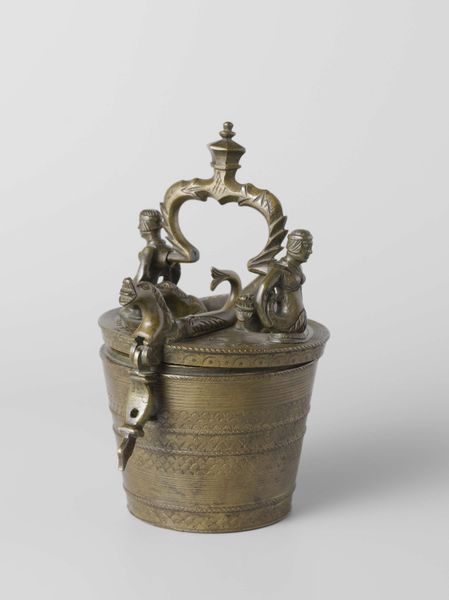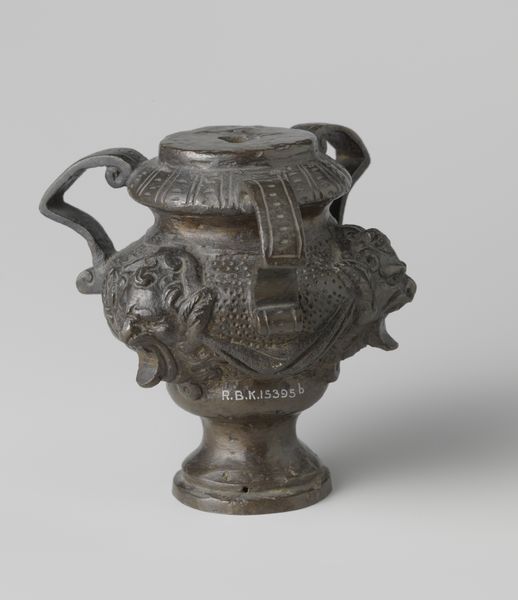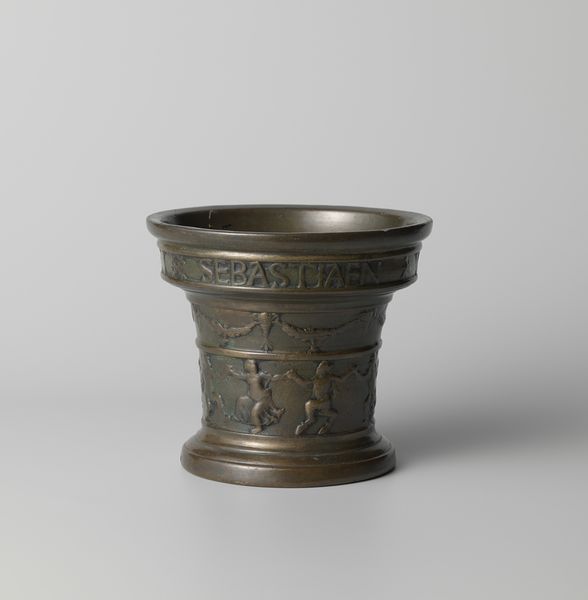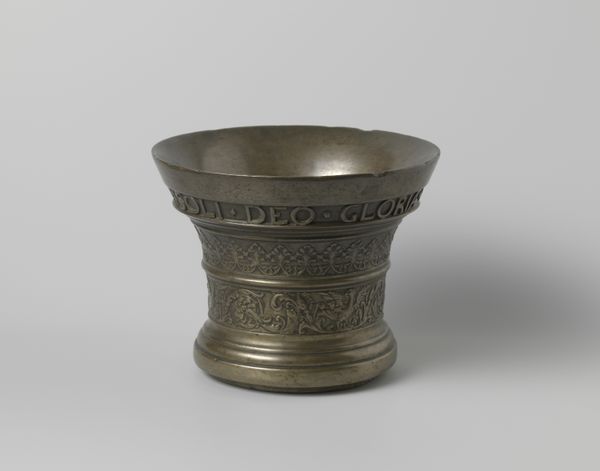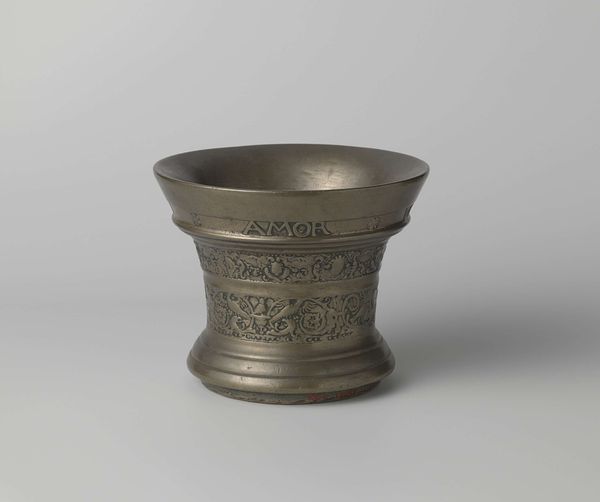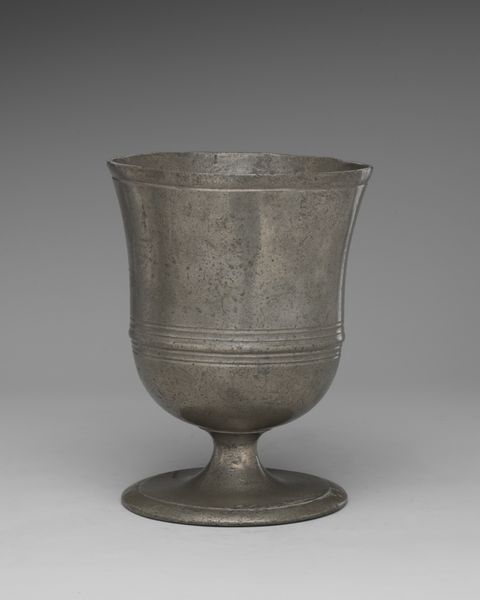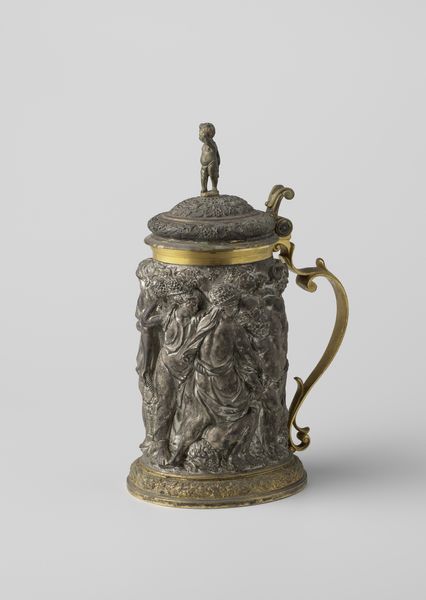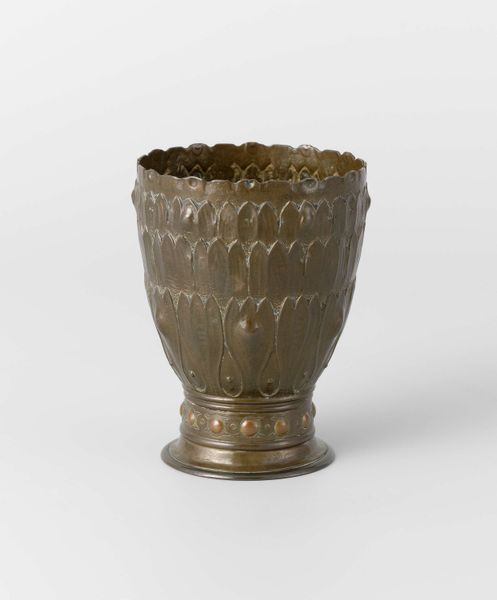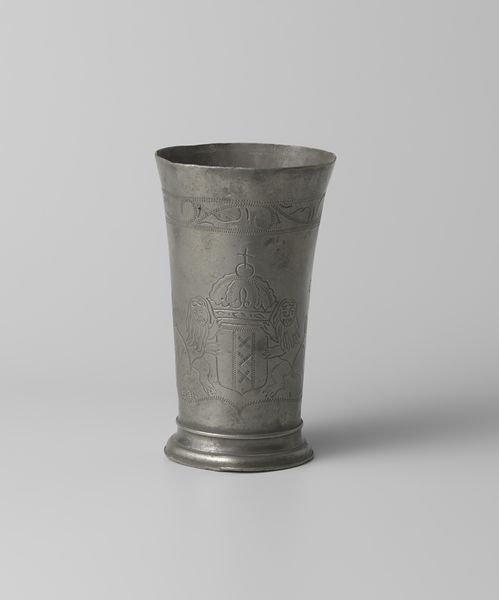
carving, metal, relief, sculpture
#
medieval
#
carving
#
metal
#
relief
#
11_renaissance
#
stoneware
#
sculpture
#
islamic-art
#
decorative-art
Dimensions: height 14.5 cm, diameter 15.5 cm, width 17.2 cm, weight 3.6 kg
Copyright: Rijks Museum: Open Domain
Curator: Here we have a metal mortar dating back to 1537, created by Albert Hachmann. Its name is inscribed upon it: "Vijzel met opschrift: jhesus.maria.anno.domini.m.cccc.xxxvii". Curator: It's quite austere, isn’t it? Almost industrial. The hard lines and muted silver hue give it a stoic presence, hinting at a somber history beyond just functionality. Curator: Functionality is key here. Consider the interplay of its geometric form. The octagonal base supporting a more rounded body, all leading to a wide, open top—form perfectly following function. The artist skillfully used relief carving to articulate these distinct sections. Curator: But what kind of function? Who would have owned and used something like this back then? Was it someone of wealth or status who had the ability to commission it? The inscription of "Jesus Maria" suggests that the user practiced Christianity, so perhaps it was used within a religious context? Curator: Let’s stick to the tangible elements. Note the lion's head decorations with rings hanging from their mouths. Their gaze is both fierce and decorative, interrupting what might otherwise be perceived as overly rigid geometry. It creates an arresting visual rhythm around the object. Curator: Rhythm, yes, but perhaps a rhythm rooted in religious devotion. The repetition of holy names speaks to a culture steeped in faith, where even the objects of everyday use were inscribed with invocations. This wasn’t merely decorative, but served as a constant reminder of a community's values. I would like to analyze how accessible was for different sectors of society. Did artisans come from different communities? Who were they? Were there female figures in this craft, as well? Curator: What’s interesting to me is how Hachmann balanced ornamental flair with practicality. The craftsmanship speaks for itself. The refinement of its sculpted forms indicates that Hachmann knew very well how to convey certain intentions when producing a certain type of object. Curator: Right. Seeing this object has given me some food for thought. How are cultural beliefs materialized into the artworks displayed in museums and historical buildings? Whose stories are told when artworks such as this are analyzed? Curator: And for me, it's about appreciating the elegance of form, balanced proportions, and refined metalwork.
Comments
No comments
Be the first to comment and join the conversation on the ultimate creative platform.
